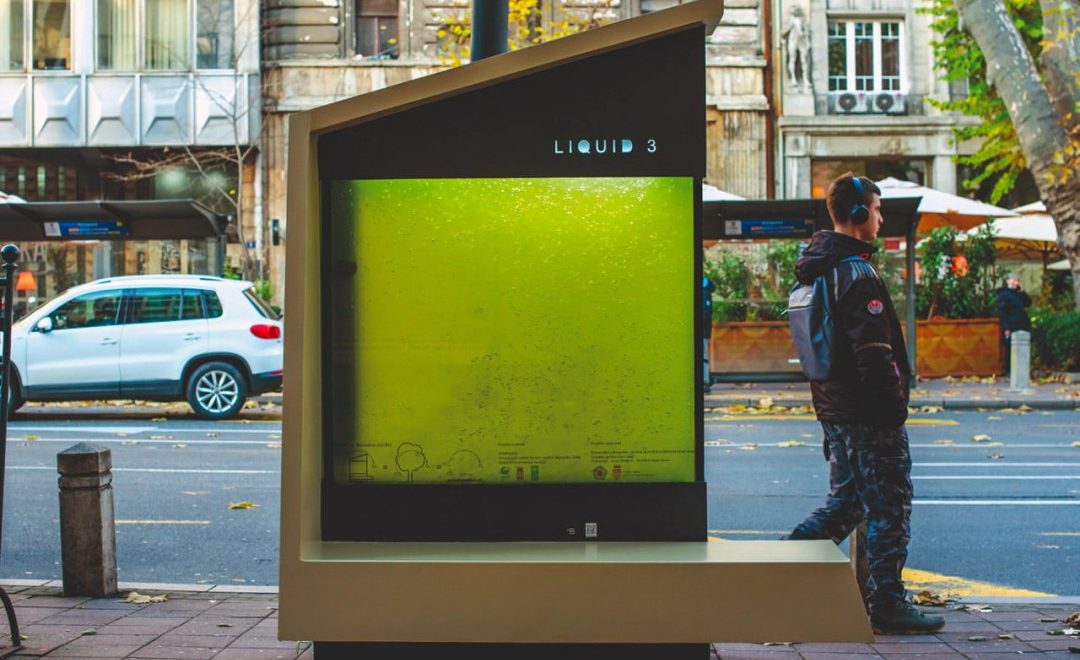Introduction
Air pollution is increasingly alarming in urban regions globally, posing severe risks to both human well-being and the ecosystem. Belgrade, Serbia, stands as a prime example, ranking as the nation’s fourth most polluted city. To address this pressing issue, researchers have pioneered a novel remedy: the “liquid tree.” This urban photo-bioreactor capitalizes on microalgae’s capabilities to enhance air purity. In the dynamic landscape of industrial technology, innovative solutions often emerge to address longstanding challenges. One such groundbreaking advancement is Liquid Tree Technology, poised to revolutionize the utilization of industrial areas, particularly in apparel manufacturing facilities. This article delves into the transformative potential of Liquid Tree Technology and its impact on optimizing space usage in industrial settings.
Challenges in Apparel Manufacturing
In the realm of apparel manufacturing, optimizing space within facilities poses a significant challenge. Limited floor space coupled with the need for efficient workflow management often leads to suboptimal utilization of resources. This results in operational inefficiencies, increased costs, and hindered productivity. Addressing these challenges requires innovative approaches that can streamline processes while maximizing available space.
- – Space Constraints: Industrial areas in apparel manufacturing facilities are typically constrained by physical limitations, restricting the layout possibilities and hindering the adoption of advanced manufacturing techniques. For example – Minimum 10% of the total area has to be tree in commercial buildings.
- – Workflow Disruptions: Inefficient space utilization can disrupt the workflow, leading to bottlenecks, delays, and subpar production outputs. These disruptions not only impact operational efficiency but also affect overall competitiveness in the market.
- – Understanding Liquid Tree Technology: Microalgae have been proven to be 10 to 50 times more efficient than traditional trees in binding CO2, making liquid trees a highly effective solution for carbon sequestration. Liquid Tree Technology represents a paradigm shift in industrial space optimization. At its core, it utilizes dynamic algorithms and modular design principles to adaptively configure industrial areas based on real-time needs and constraints. By mimicking the flexibility and resilience of natural ecosystems, Liquid Tree Technology offers a holistic approach to space management.
- – Adaptive Configuration: Through the use of intelligent algorithms, Liquid Tree Technology dynamically adjusts the layout of industrial areas to accommodate changing production requirements. This ensures optimal space utilization without compromising operational efficiency.
- – Modular Design Principles: The modular design of Liquid Tree Technology enables scalability and customization, allowing manufacturing facilities to tailor their spatial configuration to specific production needs. This versatility facilitates seamless integration with existing infrastructure while offering room for future expansion.
- Implementation of Liquid Tree Technology
- Implementing Liquid Tree Technology involves a strategic approach that considers both technical feasibility and operational requirements. The following steps outline the process of integrating this transformative technology into apparel manufacturing facilities:
- 1. Needs Assessment: Conduct a thorough assessment of the facility’s spatial requirements, production processes, and workflow dynamics to identify areas for improvement.
- 2. Technology Integration: Collaborate with experienced providers to integrate Liquid Tree Technology seamlessly into existing infrastructure, ensuring compatibility and functionality.
- 3. Training and Optimization: Provide comprehensive training to personnel on the use and maintenance of Liquid Tree Technology, emphasizing its benefits and operational best practices. Continuously optimize system parameters to maximize efficiency and performance.
Case Studies
Real-world examples demonstrate the tangible benefits of implementing Liquid Tree Technology in apparel manufacturing facilities. From increased production capacity to enhanced workflow flexibility, these case studies showcase the transformative impact of this innovative solution.
Cost-Benefit Analysis
A comprehensive cost-benefit analysis is essential for evaluating the financial implications of adopting Liquid Tree Technology. While initial investment costs may be significant, the long-term benefits, including improved efficiency, reduced waste, and enhanced competitiveness, outweigh the expenses.
Future Prospects
As technology continues to evolve, the future prospects of Liquid Tree Technology are promising. Advancements in artificial intelligence, robotics, and data analytics will further enhance its capabilities, ushering in a new era of industrial optimization and sustainability.
Conclusion
In conclusion, Liquid Tree Technology represents a transformative solution for optimizing industrial area utilization in apparel manufacturing facilities. By harnessing the power of adaptive algorithms and modular design principles, this innovative technology offers unprecedented flexibility, efficiency, and sustainability. Embracing Liquid Tree Technology is not just an investment in the future but a catalyst for unlocking untapped potential in industrial space management.

Aditya Kumar
Associate Consultant


Leave a Comment